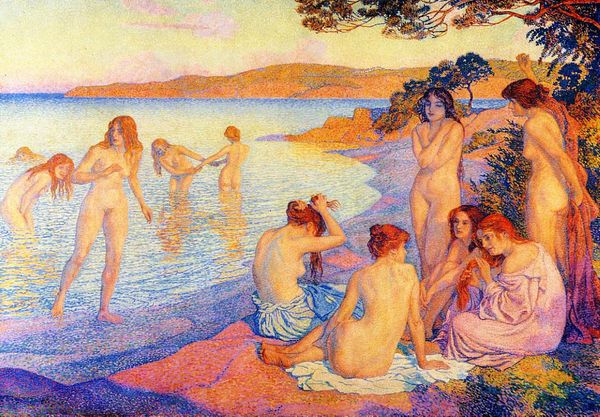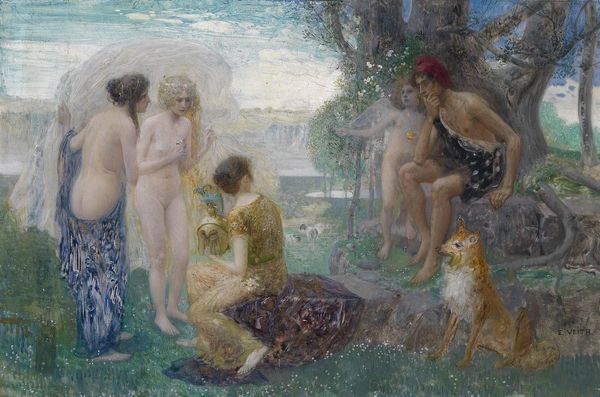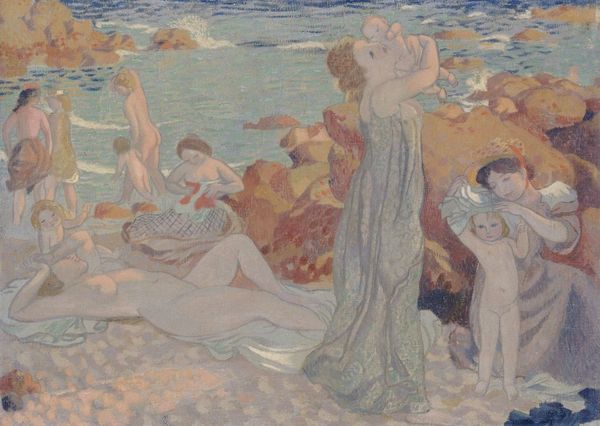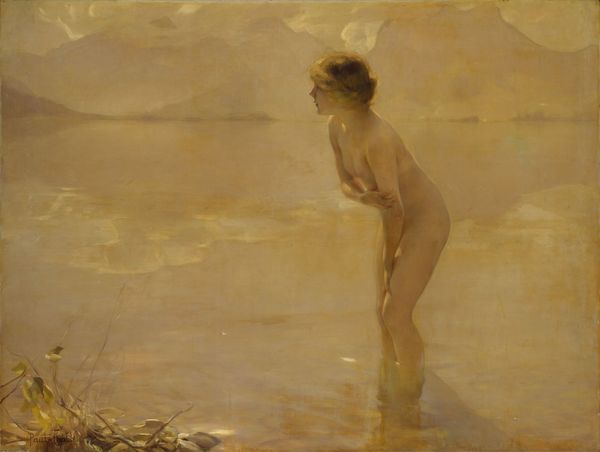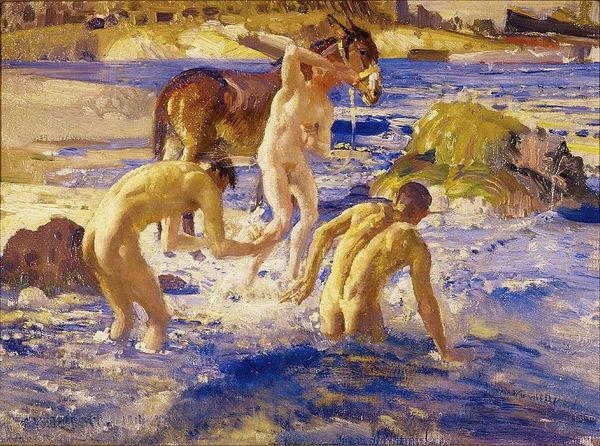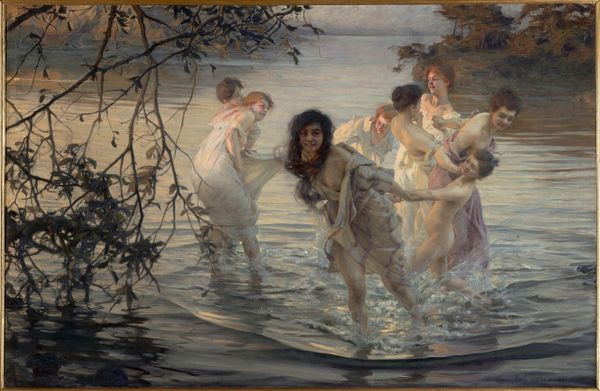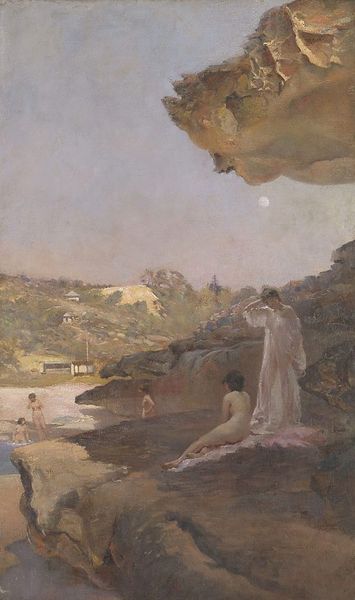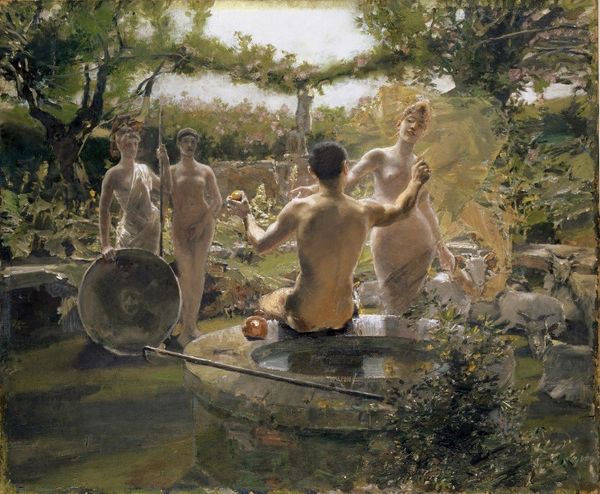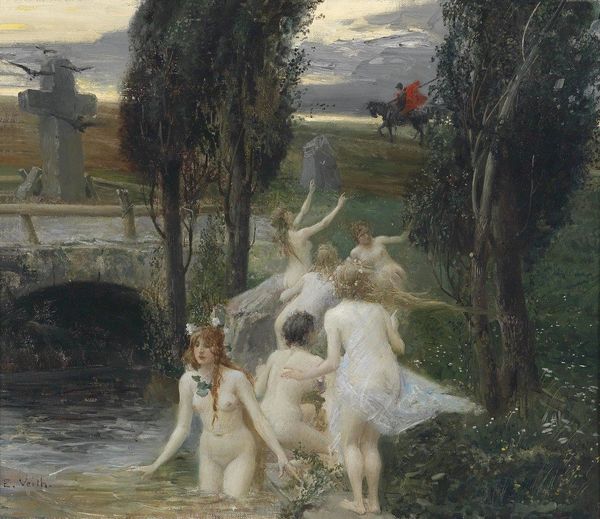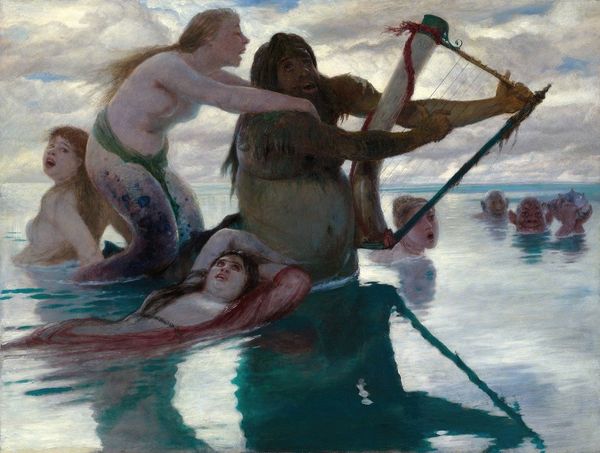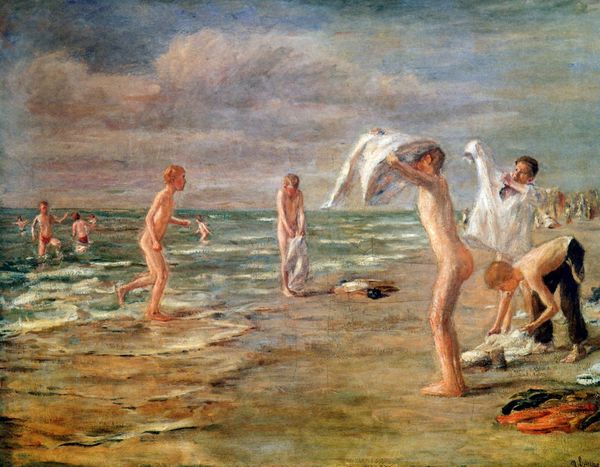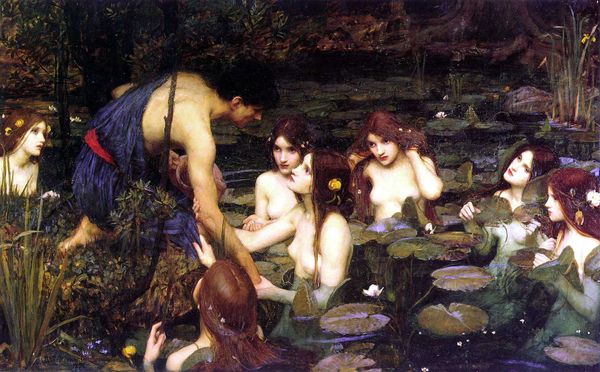
Copyright: Public domain
Curator: Oh, this feels languid, almost dreamlike. What's the title? Editor: We're looking at Paul Émile Chabas’s “Premier Bain,” painted in 1907 using oil on canvas. Immediately, I’m struck by the composition. The figures are arranged in such a way as to almost form a frieze. The background hills almost blend with the tones of water. Curator: The figures definitely capture something of a bygone era of romanticism, particularly how they interact with nature and with each other. Did nudes like this still have an academic purpose at the time? Editor: Indeed. Though academic art was coming under increased scrutiny from the avant-garde, genre scenes with nudes – especially depicting bathing – remained quite popular in established salons. Consider the complicated relationship between public taste, censorship, and evolving artistic standards. Works depicting "innocent" subjects such as children, helped skirt moral objections. Curator: "Innocence" is interesting to consider in relation to imagery that leans heavily on romantic notions of unspoiled beauty. But it seems like an older visual trope to pair femininity with idealized nature? Is this continuity a commentary on cultural values and standards? Editor: Certainly. Chabas is tapping into long-standing conventions within art history where women are closely tied to depictions of idealized nature, but the turn of the century comes with anxieties around the body that this scene negotiates. The lake here becomes a place of purity and youthful awakening, visually separating this moment from any potential dangers associated with changing times. Curator: Looking again, I notice how light dances across the surface of the water. I almost missed how masterfully Chabas painted light and shadow across skin in motion, making it almost palpable! I see a strong sense of unity, and the brushwork evokes both fragility and fleeting movement. Editor: This ability to blend contemporary trends with academic tradition really illustrates Chabas's command of form and the broader cultural forces that made works like these successful, even as tastes began to shift dramatically. Curator: Absolutely, the work holds both conventional symbolism and hints toward change. Fascinating!
Comments
No comments
Be the first to comment and join the conversation on the ultimate creative platform.
